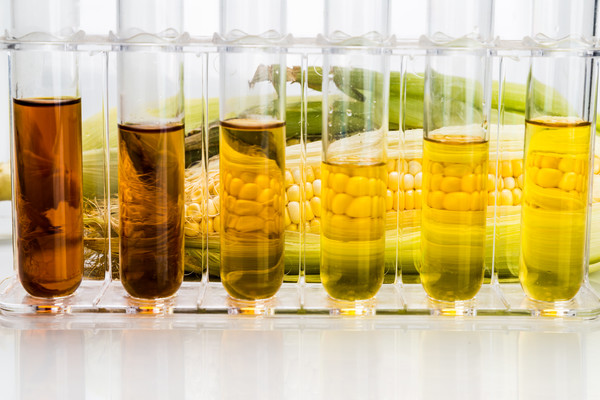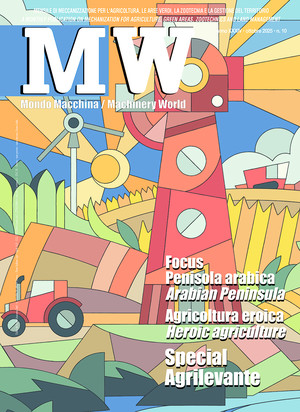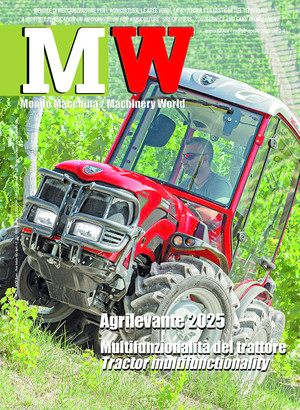
From fossil fuels to third-generation biofuels
In recent decades, alternative solutions have been developed that are as effective as fossil fuels. Third-generation fuels now represent a promising path to sustainability
The introduction of machines equipped with internal combustion engines powered by petroleum-derived fuels revolutionized agriculture, gradually replacing manual labor and animal traction. More specifically, diesel and, to a much lesser extent, gasoline are the derivatives that still represent the main energy sources for agricultural activities today. However, the intensive use of fossil fuels causes significant environmental problems, including massive greenhouse gas emissions, air pollution, and dependence on non-renewable resources. In recent years, agriculture has been seeking more sustainable alternatives. To reduce environmental impact without compromising productivity, vehicles powered by fuels produced from renewable sources, or using electricity, either partially or entirely, have been developed.
First-generation biofuels. These are products derived from typical crops, such as corn, sugarcane, rapeseed, soybeans, and sunflowers. The most popular are ethanol, produced by fermenting sugars contained in corn and sugar cane, for example, which can be mixed with gasoline to power Otto cycle internal combustion engines, and FAME (Fatty Acid Methyl Ester) biodiesel, obtained from rapeseed, soybean, or sunflower vegetable oils through transesterification, suitable for Diesel cycle engines. Although they reduce net greenhouse gas emissions compared to fossil fuels, these fuels present some problems: their production requires large areas of agricultural land, which can compete with food crops and, therefore, with the so-called "right to food," raising ethical concerns. In addition, intensive cultivation of these species can deplete the soil, increase erosion, and require high use of fertilizers and plant protection products, with negative environmental impacts. Despite these limitations, first-generation biofuels represented the first step towards more sustainable energy production, paving the way for more advanced solutions, such as second-generation biofuels, derived from agricultural waste and lignocellulosic residues.
Second-generation biofuels. These are obtained from agricultural by-products, lignocellulosic crop residues (such as straw, prunings, and wood chips), or organic waste, thus avoiding the direct use of crops normally intended for food purposes. The main ones include ethanol produced from the fermentation of cellulose in straw and other plant material, and biodiesel made from waste oils (HVO, Hydrotreated Vegetable Oil). They undoubtedly represent a more sustainable alternative because they eliminate (or at least reduce) competition with food and make useful use of materials that would otherwise have to be disposed of, perhaps with a high environmental impact. However, producing second-generation biofuels poses technological and managerial challenges. The conversion of cellulose into fermentable sugars requires processes while the collection and management of agricultural residues must be carefully planned to avoid reducing soil fertility. In this context, as with first-generation biofuels, the mechanization of supply chains and the development of increasingly advanced agricultural technologies can make a decisive contribution to optimizing biofuel production processes. The use of new-generation machinery, for example, is of primary importance for the treatment, processing, and transport of agricultural and forestry biomass, while state-of-the-art plants play a decisive role in ensuring the environmental sustainability of the entire supply chain.
Third-generation biofuels. These currently represent the most advanced prospect in the bioenergy sector. Unlike the first two generations, these new fuels use microalgae and cyanobacteria, photosynthetic organisms characterized by rapid growth, high lipid and carbohydrate content, and an excellent ability to proliferate in marginal environments. This approach therefore avoids competition with agricultural activities intended for food purposes, paving the way for integrated, highly sustainable energy supply chains. Algal biomass can be transformed into a diverse range of fuels. The lipids accumulated in microalgae serve as raw material for biodiesel production, which is obtained through extraction and esterification processes. Carbohydrate and protein fractions, on the other hand, can be exploited through microbial fermentation for the production of bioethanol and biobutanol; the latter has particularly interesting chemical-physical properties, as seen, for use in gasoline blends. The residual components of biomass can be fed to anaerobic digestion processes to produce methane and hydrogen-based biogas. At the same time, some species of green algae offer the possibility of generating biohydrogen under controlled anaerobic conditions, an energy carrier of great interest due to its reduced environmental impact.
There are many advantages to using algae as a bioenergy source. Productivity per unit area can exceed that of terrestrial oil crops by up to 10 times, drastically reducing land requirements, while the ability to grow in saltwater or wastewater reduces pressure on freshwater resources. Furthermore, using industrial CO₂ as a carbon source enables integrating biofuel production with climate change mitigation strategies. Finally, the possibility of obtaining multiple energy products from the same biomass makes the algae supply chain particularly flexible and energy efficient. Despite this promising potential, technological barriers remain significant at present.
The harvesting and extraction of lipids are also critical steps, both in terms of efficiency and economic and energy sustainability. The genetic improvement of algal strains conditions development prospects, the design of hybrid cultivation systems capable of balancing costs and yields, and the integration of algal production with existing industrial processes, such as wastewater treatment or CO₂ capture from energy plants.
Biofuels from FORSU
FORSU (Organic Fraction of Municipal Solid Waste) is the part of household waste consisting of biodegradable organic materials, such as food scraps, fruit and vegetable waste, and other plant-based residues. Their conversion into biofuels and, therefore, into energy through combustion represents an important option for effective sustainability. The processes involved include anaerobic digestion to produce biogas (or, better still, biomethane), and extraction and subsequent transesterification (or hydrogenation) of oils to obtain biodiesel. This solution reduces the amount of waste sent to landfill, lowers greenhouse gas emissions, and limits competition with crops.
However, FORSU management requires adequate facilities, careful and regular checks on the quality of the biomass supplied, and efficient logistics for collection and treatment.
Algae cultivation methods
Open systems (open ponds): shallow, low-cost, and easy-to-manage tanks or lagoons. They allow for large-scale production but have low yields and are highly susceptible to contamination and environmental variations.
Closed systems (photobioreactors, PBRs): transparent reactors (tubular, panel, column) with optimized control of light, CO₂, and nutrients. Ensuring high cell density and reduced contamination, they are suitable for microalgae with high lipid content but involve high investment and management costs.
Macroalgae (mariculture and coastal ponds): algae are cultivated in the open sea on ropes or nets, or in seawater-filled ponds. They produce large quantities of carbohydrate-rich biomass, useful for bioethanol and biogas production. The main limitations are seasonality and vulnerability to weather and sea conditions.
Hybrid systems: to balance productivity and economic sustainability, they combine photobioreactors, which are highly efficient in the initial phase of the process, with open ponds, which serve as a low-cost final phase.








